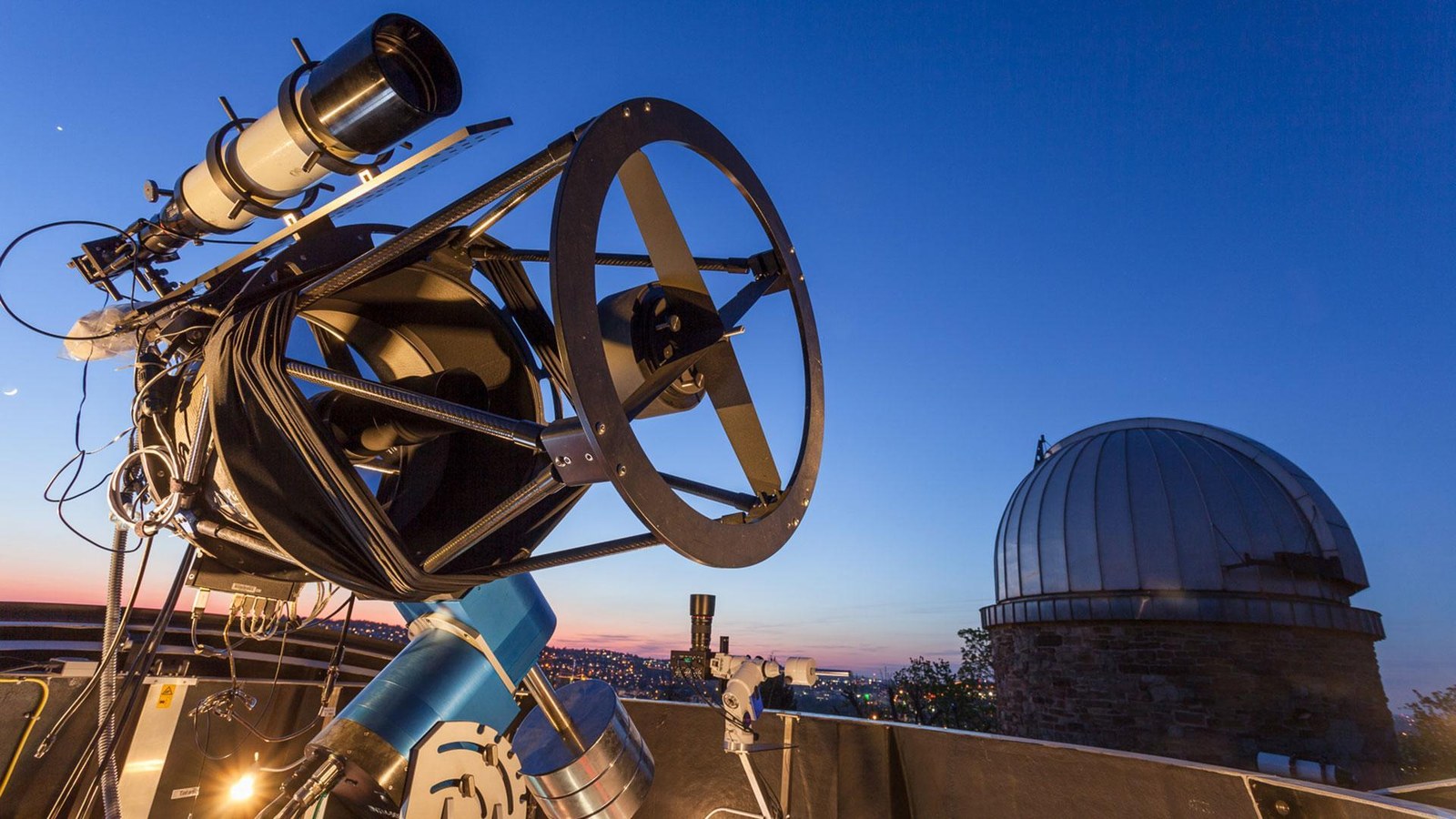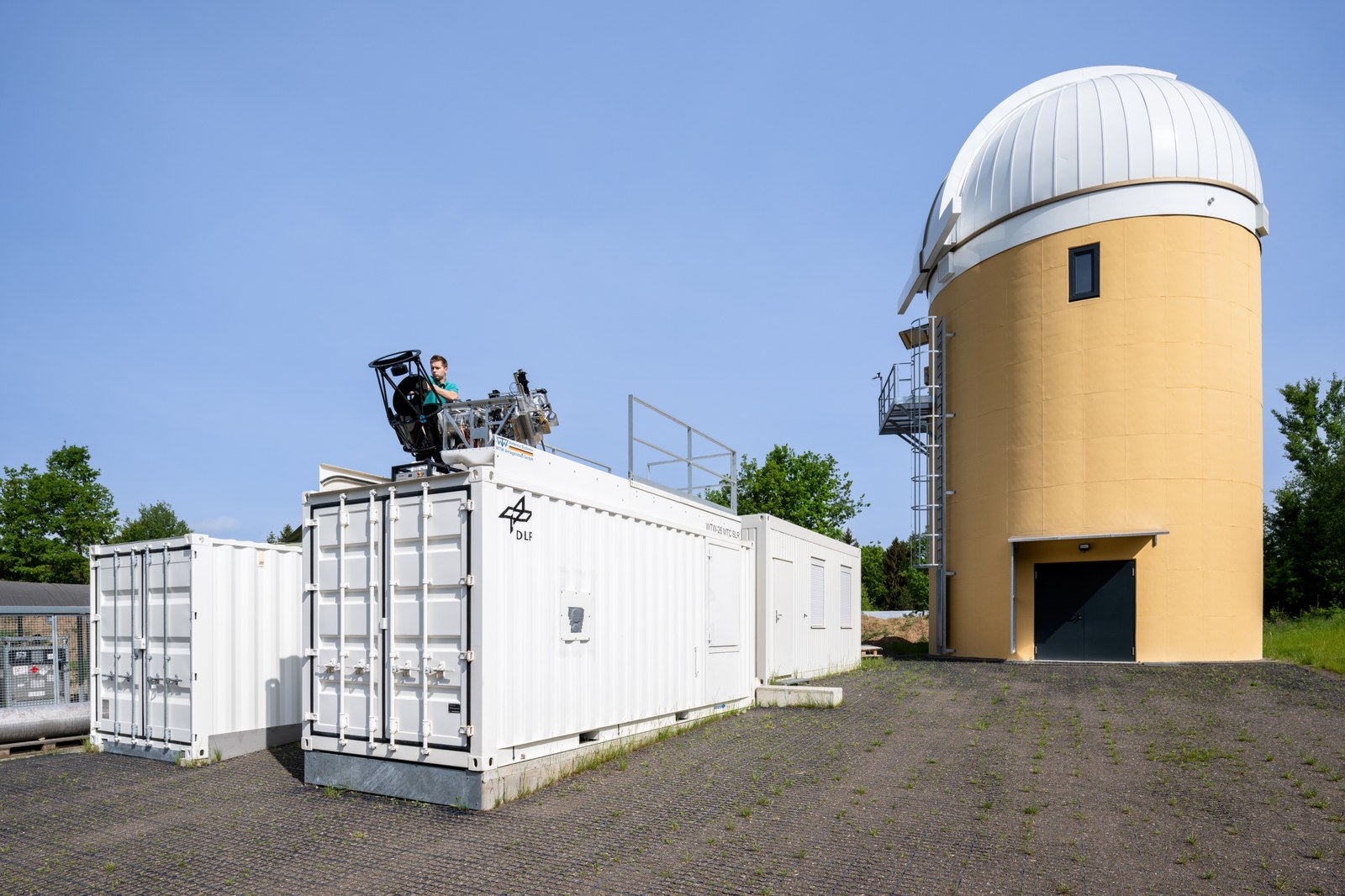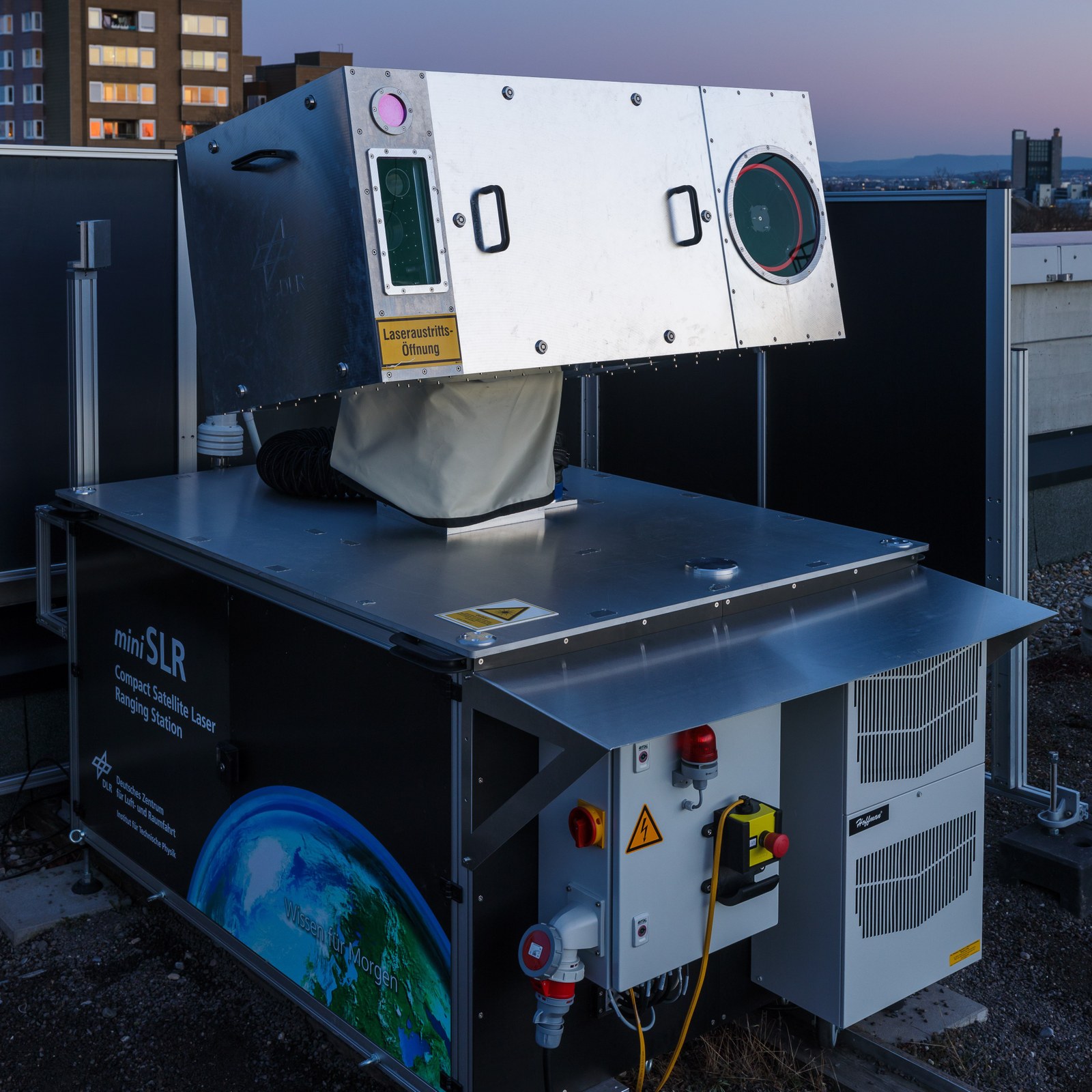Laser-based localisation, analysis and collision avoidance with space debris
The detection and removal of space debris contributes to the preservation of space as a usable infrastructure. In the future, efficient and cost-effective solutions based on observation networks will be required for the optical detection, orbit determination and characterisation of orbital objects, and the institute is contributing to their development with innovative solutions. The technology developed will complement existing sensors, in particular radar sensors, or be merged with them in the future. Overall, the Institute is making technological developments for the safe operation of current satellites and the safe realisation of future space missions. The institute is developing concepts and technologies for the reduction of space debris.



DLR researchers at the Institute of Technical Physics are working on laser-optical observation methods to precisely determine the trajectory of active satellites and space debris. With this precise orbit data, active satellites can then carry out targeted evasive manoeuvres. To determine the orbit of space debris objects, they are observed with an optical telescope and simultaneously irradiated with laser pulses. A few milliseconds later, a weak reflection of the laser light comes back from the objects. By measuring the time of flight of the laser pulses and the position of the object in the sky, the DLR researchers can determine the trajectory to within a few metres. In the long term, it must be possible to remove scrap objects from their orbit.
The constant increase in space debris poses a serious threat to active satellites and the ISS, as the debris remains in orbit above an altitude of 700 kilometres for decades to centuries.
In the long term, technologies must be developed to reduce the risk to orbital infrastructure posed by space debris. With this in mind, researchers at the Institute of Technical Physics are working on methods for laser-based collision avoidance. This involves changing the orbital velocity of objects by means of photonic momentum transfer using continuous laser irradiation and thus avoiding evasive manoeuvres with other objects. Another method is based on the analysis of laser-optical light curves of orbital debris objects and enables the preparation of robotic missions to remove space debris objects. a large part of the work is carried out in the scientific working group "Orbital Photonics", in particular using the Johannes Kepler Observatory in Empfingen.
The transportable ground station STAR-C (Surveillance, Tracking and Ranging Container) is also developed and operated at the Empfingen site. The robust system is integrated into a 20-foot ISO container and can be operated independently as a complete laser-optical ground station for locating space debris objects.
